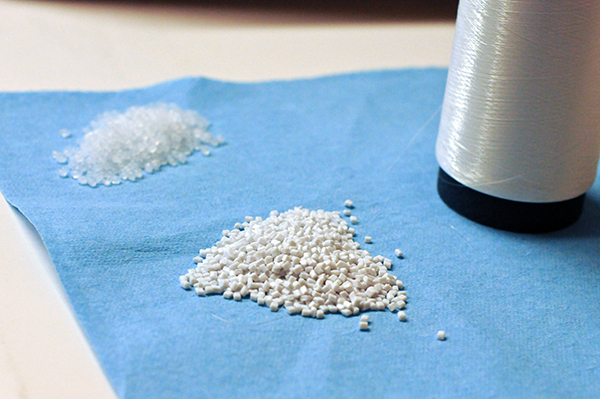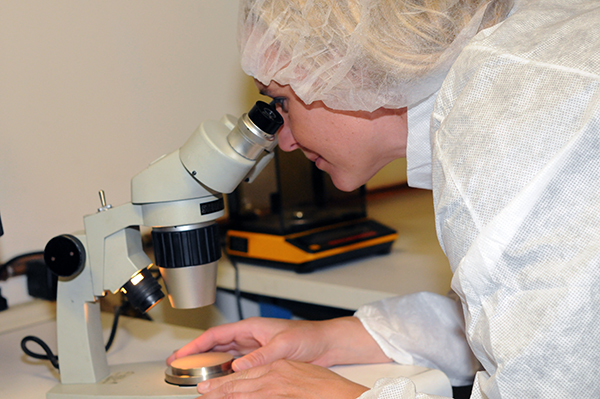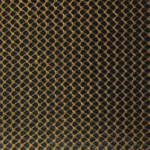The onslaught of lawsuits against manufacturers of vaginal mesh products has raised the question of whether companies are doing the proper due diligence in researching and selecting biologically compatible implantable materials, and whether the right materials are even available for such applications. Earlier this year FDA took a stronger position on ensuring the safety of mesh used in transvaginal pelvic organ prolapse (POP) repair by reclassifying the devices from Class II to Class III products.
MedTech Intelligence discussed this issue with Robert Torgerson, president of RxFiber, LLC, who shared his perspective on the approach that companies should take when sourcing fibers and materials for implantable mesh. “Cheapest isn’t always the best,” said Torgerson. “A medical grade fiber/material will be more expensive than an industrial produced fiber because of the requirements the producers need to follow to produce materials under the ISO 13485 guidelines and other standards.”

MedTech Intelligence: What are the challenges that both device suppliers and device OEMs face in selecting fibers/materials for mesh products?
Robert Torgerson: The challenge comes when an industrial fiber and/or fabric is selected and needs to be qualified for medical device applications. Bottom line: An industrial fiber or fabric produced with a non-medical use polymer extruded in an industrial setting is against FDA and other regulatory standards. The five most important fiber and textile selection requirements are:
- Source fiber that is produced under medical-grade standards.
- Source fiber that is produced with raw materials (spin finish and resins, etc.,) that are allowed for medical use.
- Ensure extensive testing is being conducted to ensure safety and efficacy of the fiber/material.
- Ensure the manufacturer of that fiber/material is informed that their fiber/material will be used in a medical device application. In most cases, due to risk intolerance, many suppliers have refused to sell their materials to medical device manufacturers for medical use. DuPont will no longer allow Dacron (DuPont registered trade name for their polyester fiber) to used for any medical application. Some companies still use the name “Dacron” to identify the polyester fiber, when in fact they should not have any reference of the name “Dacron” on any paperwork filed with the FDA or other governing bodies for medical devices.
- Be proactive to source medical grade at the start. If a non-medical grade source is used in initial feasibility and/or commercial use, the manufacturer will need to scramble to find a new source of fiber/material to re-qualify as a source, which impacts timelines, costs and potential litigation. The vaginal mesh lawsuits continue with a value of over a billion dollars in claims against medical device companies that are caught up in the case.

MTI: What are the materials sourcing, evaluation and testing process both from the perspective of educating companies and working with suppliers?
Torgerson: Any company that is a supplier or manufacturer of a component or device that will be used in any medical application should be following ISO 13485 guidelines to ensure the reproducibility, traceability, safety and efficacy of the component or device. Even tooling to make a component or device requires traceability. The company doing the purchasing should visit and audit their suppliers to ensure the company is producing their required material(s) under the guidelines set by the customer and to ISO 13485 requirements. The material(s) should go through a series of test phases (development, feasibility, verification and validation, and production) to mitigate any risks for the device or material and this demonstrates that the process can be repeatable.
MTI: Discuss materials selection in the context of FDA’s reclassification of surgical mesh for transvaginal POP earlier this year. How does this affect the product development process?
Torgerson: By reclassifying mesh into a Class III device, it will require extensive pre-clinical and clinical trials of the device to ensure safety and efficacy. This will become an even more expensive undertaking and time-consuming process. It will depend on how many patients are required for the clinical trials and the follow-up period of those patients, which will have an impact on the time and money required. As [I] stated, these recent cases have put a much brighter spotlight on ensuring medical device companies have fiber and materials that are produced under medical-grade standards, from raw materials, the extrusion process, documentation requirements, correct and consistent ASTM testing methods, and that it meets the overall ISO 13485 standards.
MTI: Discuss the internal conflict that occurs between the operations and engineering department. How does this present hurdles when selecting materials, and how should companies navigate this relationship?
Torgerson: At the end of the day, people in the business of making medical devices or are a supplier for components for medical devices should be in the business to save and/or extend lives. That is the big picture. In some cases, that big picture may get lost along the process with trying to cut time and/or costs, which reduces quality therefore impacting the safety and efficacy of the final medical device and the intended function.







